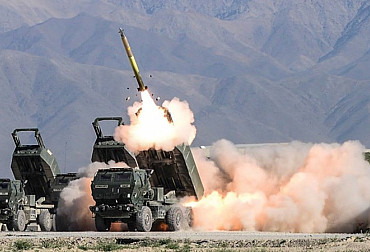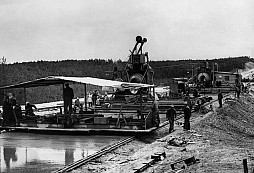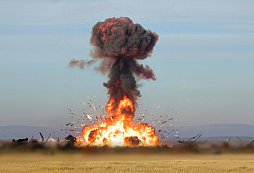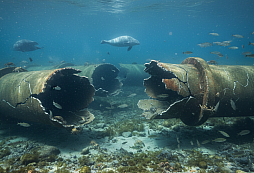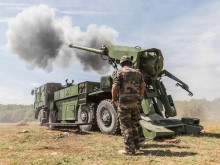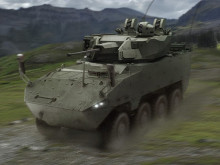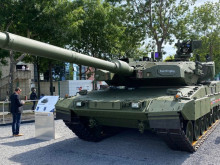Ammunition not only for CAESAR Howitzers
Artillery is a basic means of supporting the ground forces in most forms of combat deployment. Their versatile technological development can be observed throughout history, always based on the requirements of soldiers fighting in the field. The following article deals with one of the areas of increasing the effectiveness of field gun artillery, namely the range from the point of view of ammunition design modification.
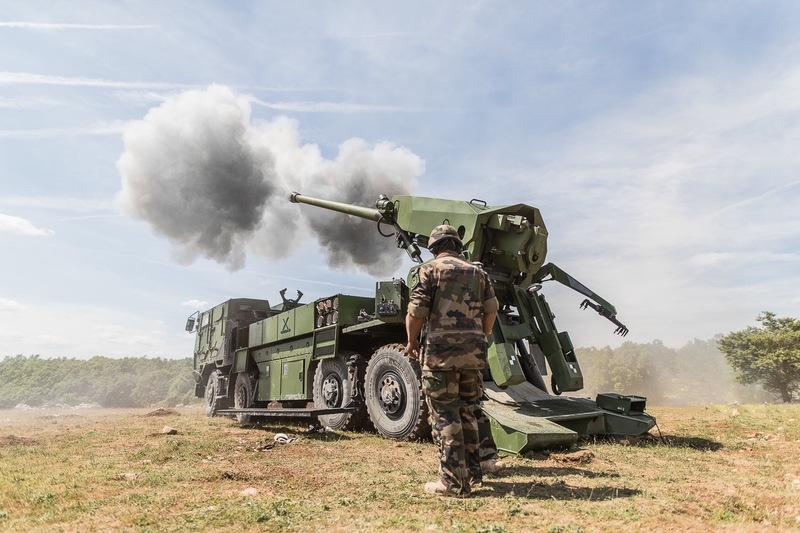
Picture: Artillery is a basic means of supporting the ground forces in most forms of combat deployment. Pictured is the CAESAR 8x8 artillery system, which the Ministry of Defence decided to purchase for the 13th Artillery Regiment in Jince. | Nexter Systems
The effectiveness of current artillery can be increased in three basic areas, which are interconnected. They are weapons, ammunition and information security. Another division is into the area of increasing range, accuracy and effect on the target, or in the target. The range can be increased within external ballistics (outside the barrel) and internal ballistics (inside the barrel). Changing the range is always achieved by changing the design of the weapon, ammunition, or both. Design modifications to increase the range include mainly increasing the length of the barrel and increasing the propellant charge, or its effectiveness. Furthermore, structural modifications of the projectiles/grenade could take place, for the purposes of this article we will focus on projectiles.
Development of artillery shells
The basic type of artillery ammunition for gun artillery is artillery shell, which consists of a set of elements necessary to make a single shot and ensure the desired effect in the target. The basic parts of the shell are a projectile and a cartridge (propellant charge without a cartridge). The initiation of the propellant charge is ensured by a primer. If the projectile and the cartridge are connected from production to firing, they form a single shell. If the projectile and cartridge are separate, it is a split shell. Its advantage lies in the ability to adjust the contents of the cartridge, usually the amount of gunpowder. This can change the range of the weapon, the range of the projectile after leaving the barrel.
Ways to increase range
The range of the projectile can be extended mainly by reducing various aerodynamic drag. This can be achieved in four ways, or a combination of them. Firstly, it can be improving the aerodynamic shape of the projectile, secondly the use of the sub-caliber effect, thirdly reducing the resistance behind the bottom of the projectile, and finally the use of a rocket or other engine.
The first group or generation of missiles with increased range bears the designation ERSC (Extended Range Sub-Caliber). The concept is basically identical to anti-armour sub-caliber projectiles, which use the difference between the caliber of the projectile in the barrel and outside of it after the separation of the guiding rims. They have the major disadvantage that a smaller caliber projectile carries a smaller amount of explosive than a higher caliber projectile and usually creates a smaller amount of effective fragments.
The second development generation is called ERSB (Extended Range Sub-Bore). These are missiles with an elongated, significantly slimmer front ogive but without a centering clamp. In order for the projectile to move stably in the barrel, the clamp was replaced by several, most often four, slanting aerodynamic bourrelet nubs on the front ogive, which lead the front part of the projectile in the barrel. The original guiding rim was replaced by a plastic one, which is separated after leaving the barrel. The caliber of the body of the projectile is only slightly smaller than the caliber of the barrel. As a result, the difference in the amount of explosive compared to a higher caliber projectile is negligible.
The development continued with ERFB (Extended Range Full-Bore) missiles. The design differs from the ERSB in that they have a longer front ogive, while the total length of the projectile is up to 6.5 caliber. The ERFB-shaped projectile achieves a range 10 to 40 % higher than the classically shaped biogival projectile.
ERSB and ERFB missiles are in some cases equipped with a so-called suction cavity in the bottom, which improves the flow around the rear ogive and the flow of air behind the projectile. This makes it possible to increase the range by up to 10 %. It is interesting to note that the suction cavities were tested by the Pilsen-based company Škoda already during the German occupation of 1939-1945.
The last mass-produced development group are ERFB-BB (Base Bleed) projectiles. The rear ogive of the projectile, or its rear part forms a gas generator. In the generator, there are gases created during flight and they escape through an opening in the bottom, or through a group of openings, and reduce the air resistance behind the bottom of the projectile. The media often mistake this solution for a rocket engine.
What is a well-known group, but not used in practice, are the so-called grenade-rockets. They use the designation RAP (Rocket Assistant Projectile). The development took place in the period after the Second World War in a number of countries, including Czechoslovakia. In practice, it turned out that the rocket engine reduces the space for explosives in the projectile and also caused problems with the accuracy of firing. One type of projectile was introduced only temporarily into the arsenal of American field artillery. The XM1113 projectile with a rocket engine is currently being developed in the USA. The disadvantage of lower accuracy of grenade-rockets can be eliminated by equipping them with control pads and an electronic stabilization system. However, this will increase the price of the final product.
The latest innovation is the use of a ramjet with solid fuel. The development of a projectile with a 155mm ramjet is currently underway at the Norwegian company NAMMO, in cooperation with the American consortium Boeing. The competing product XM1155 is being developed by the American consortium Raytheon. Its estimated range is around 60 miles. According to Russian sources, the new Russian self-propelled gun howitzer Koalicija SV has a range of 80 to 90 km. It is therefore likely that it uses projectiles with a ramjet. The advantage of projectiles with a ramjet is the high flight speed, which shortens the flight time, and at the same time increases the accuracy of the projectile by eliminating external influences, from wind to Earth rotation. Missiles are less detectable by radars due to high velocity or the formation of plasma. Therefore, they are difficult to destroy with missile and laser anti-missile systems. What is a disadvantage, similarly as for the sub-caliber missile, is a smaller volume of transported explosives. The price of missiles with a ramjet is likely to be significantly higher compared to previous designs.
Czech and Czechoslovak possibilities
Until 1990, Czechoslovakia produced several types of classic artillery ammunition - projectiles and cartridges, propellant charge, primers and fuses. At the same time, further development of grenades, fuses and propellant charge took place. In the 1990s, the state and military support for the Czech defence industry was negligible, if there was any at all, which led to a significant deterioration in the possibilities of development and production, and a reduction in self-sufficiency of state defence. The situation did not improve much in the first decade of the 21st century. At present, grenades, fuses and cartridges are not produced in our country. The development of propellant charges is of a good standard, including modular ones in Explosia Pardubice (Semtín). The company is able to start mass production almost immediately. According to the available information, no one can currently produce cartridges in our country. The presses in Žďár nad Sázavou fell into foreign hands as part of the privatization and were probably taken away or sold abroad. From this point of view, it is an advantage that the CAESAR artillery system, which is to be introduced into the ACR armament, has a sealed screw cap and uses modular propellant charge without cartridges. The projectiles used to be manufactured by a large arms factory in Dubnice nad Váhom and the processing of the projectiles was provided by the local company DEZAMET, both in Slovakia. At present, the Slovak company MSM, which is part of the Czech Holding CSG, develops and manufactures projectiles, fuses, primers and other material. It can also produce ERFB and ERFB-BB projectiles, which form the basis of field artillery ammunition of the current armies. This company, together with Explosia, participated in the development of ammunition for the modernized self-propelled gun howitzer DANA M1 and M2, as well as in the development of ammunition for self-propelled gun howitzers ZUZANA and EVA.
An important step in terms of securing our army with artillery ammunition, its components, or other ammunition is the recent acquisition of the famous Spanish ammunition manufacturer Fábrica de Municiones de Granada by the Czech Holding CSG from the American consortium GDELS. This expands not only the production potential, for example by the licensed guided missiles SPIKE and Meteor, but also the export possibilities of our defence industry within the cooperation between CSG and GDELS. We are therefore able to provide ammunition for CAESAR artillery systems and modernized DANA with the forces of the Czech defence industry.















